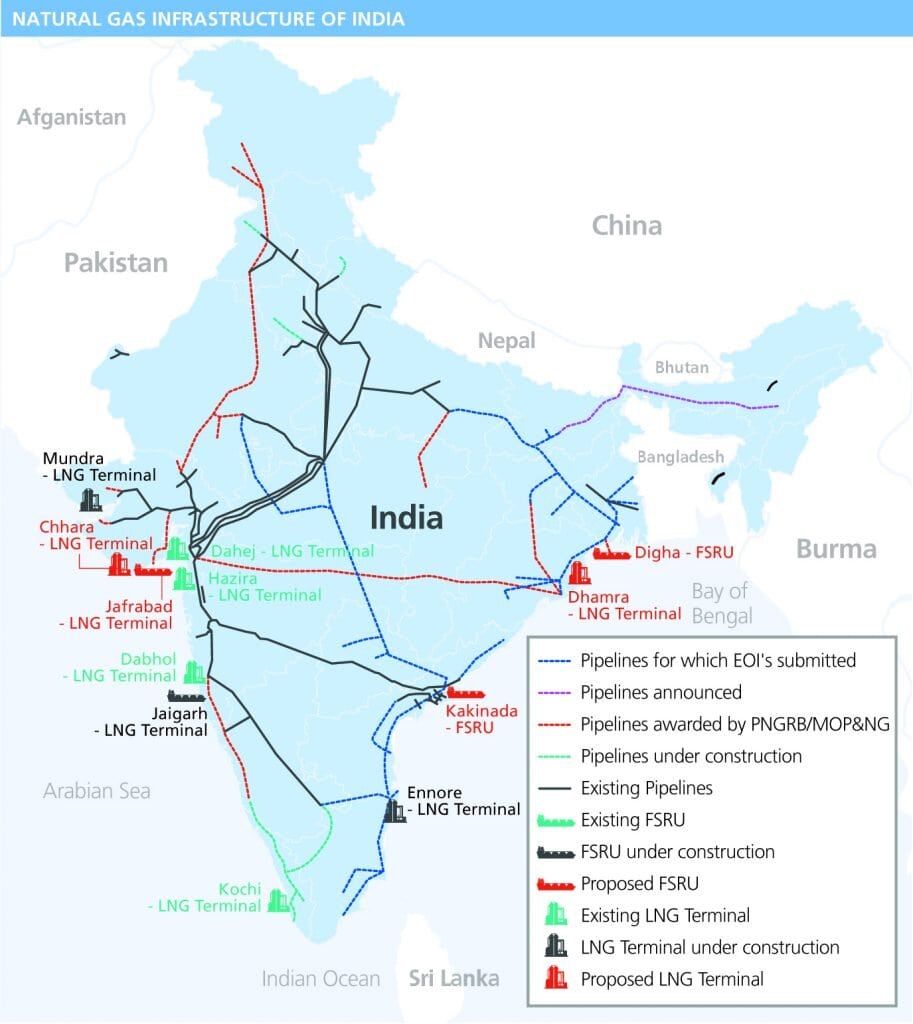Indian Economy
Natural Gas Marketing Reforms
- 02 Nov 2020
- 6 min read
This article is based on “How India is unbottling the ‘gas economy’” which was published in The Hindu Businessline on 30/10/2020. It talks about the significance and steps for India to become a market economy.
Recently, Natural Gas Marketing Reforms were approved by the government of India. These were introduced with the objective to prescribe standard procedure to discover the market price of gas through a transparent and competitive e-bidding process.
Globally, natural gas has been gaining traction as a key alternative and an ideal fuel to support the energy shift in favour of cleaner and greener energy sources. India too is on its path to become a sustainable development and has set a vision to become a gas-based economy.
However, a well-functioning gas market will require the enabling regulatory framework to reduce entry/exit barriers, achieve balance between safeguarding the interests of customers pricing, delivery expectations and sellers returns expectations.
India’s Pursuit of Becoming Gas Economy
- With its aim to increase the share of gas in the energy mix from the current 6% to about 15% by 2030, India has bolstered its efforts in making the environment favourable to ensure such an increase.
- Gas markets will play a crucial role in achieving the national aspirations of increasing the share of gas.
- Increasing domestic gas production has been a key government priority. Further, the plan to achieve ‘One Nation One Gas Grid’ will shift Indian economy towards a gas-based economy.
- A liquid and well-functioning domestic gas market, as also suggested by International Energy Agency (IEA), would be a strong pillar for building gas economy in India.
Significance of Recent Reforms
- The latest reforms are with the intent to keep to the letter and spirit of ensuring marketing and pricing freedom for gas pricing in India.
- They allow transparent price discovery based on e-bidding through an independent agency selected from a panel maintained by the Directorate General of Hydrocarbons.
- This permits affiliates to participate in the bidding process for sale of gas and allow marketing freedom to certain field development plans (FDPs) where production sharing contracts already provide pricing freedom.
- This is to bring uniformity to the bidding process across various contractual regimes and policies to avoid ambiguity.
- Such a platform will aid in expanding the gas industry by providing competitive and transparent pricing, flexibility in procurement and payment security.
Associated Challenges
- Nascent Gas Sector: The gas makes only 6% of India’s energy basket mix.
- While the government is putting all its might, critics are quick to point out that domestic production is yet to take off and majority of India’s gas requirement continues to be met through imports.
- Differential Pricing: Today, gas in India is sold at varied prices — the gas under administered price regime at $1.79 per mBtu and other domestic gas in the range of $4.5 to $5.5 per mBtu.
- This hampers the evolution of a vibrant gas market.
- Public Sector Domination: Almost 80 per cent of Indian domestic gas is produced from blocks given on nomination basis to national oil companies.
- Also, the obsolete technology and efficiency with the public sector hampers gas production as well.
Way Forward
- Deregulation of Pricing: A key aspect of ensuring market reforms to boost gas economy, would be deregulation of pricing for domestically produced gas.
- It will allow freedom to price and market domestic gas and in turn boost domestic production, making it more viable for players to invest.
- Moreover, market-determined and affordable pricing would also boost industrial growth and economic competitiveness.
- Boosting Infrastructure: These markets have greatly benefited from factors such as open access to infrastructure, system operator, unbundled marketing and transport functions and market-friendly transport access and tariff besides strong pipeline infrastructure.
- Freeing Gas Markets: Through ensuring price benchmarks, it will drive competition across the value chain and stimulate investments in exploration and production along with downstream infrastructure.
- Moreover, factors such as inclusion under GST and an overarching regulatory framework will also play an important role in boosting the overall gas markets.
Conclusion
India has currently gas pipeline infrastructure of around 16,000 km and plans to double the capacity in 2-3 years. Coupled with necessary policy and regulatory support, India can indeed accelerate its pace towards building a market-based gas economy.

|
Drishti Mains Question Natural gas is an ideal fuel to support the energy shift in favour of cleaner and greener energy sources. Critically examine the potential of India becoming a gas based economy. |




